Vriesia is a grassy plant of the bromeliad family, which fell on the windowsills of Europeans from the tropics of Central and South America. Special decorativeness of the culture is noted during the flowering period, precisely due to the originality and beauty of bright bracts. Caring for vriesia at home is quite simple, but it requires the creation of certain conditions.
Material Content:
Vriesia: types and varieties
Many representatives of the genus, which includes about 250 species in the natural environment, are often cultivated as potted flowers.

Among the most common, the following deserve special attention:
- Keeled Vriesia - A species with plain light green leaves that naturally grows in tropical Brazilian forests. Soft, long leaf plates up to 20 cm in length, covered with barely noticeable scales, form a rosette. A flower stalk up to 30 cm high, crowned with a short inflorescence with scarlet bracts and their yellow-green edges in the form of a sharp keel, develops twice a season - in the first half of summer and late autumn.
- Royal Vriesia - another monophonic variety, represented by shiny grayish-green leaves of large sizes - 50 cm long and 18 cm wide. The height of the peduncle, in the upper part of which an inflorescence is formed in the form of a drooping panicle from yellowing fragrant flowers with pink bracts, in natural conditions can reach 2 m.
- Vriesia splenitisshe shiny vriesia - variegated native of the tropics of Venezuela.Wide leaves with a tiger color, forming a rosette in the form of a funnel, have curved edges. Peduncle with a spike-shaped inflorescence, consisting of yellow flowers with red-orange or scarlet bracts, develops up to 1 m in height.
- Sanders Vriesia - A rosette plant found on the cliffs of mountains in Brazil. Leaf plates on the upper side are covered with ash scales, while the lower one is covered with spots. During flowering, which is observed in the second half of autumn, panicle inflorescences are formed, collected from a small number of flowers with light green or yellow bracts.
Important! The brightness of the bracts and the significant size of the inflorescence of Vriesia brilliant became the reasons for the emergence of another name for the plant - the “flaming sword”.
Home Care
In order to grow a healthy plant with good decorative qualities, it is necessary to adhere to certain recommendations for care.
Lighting and location
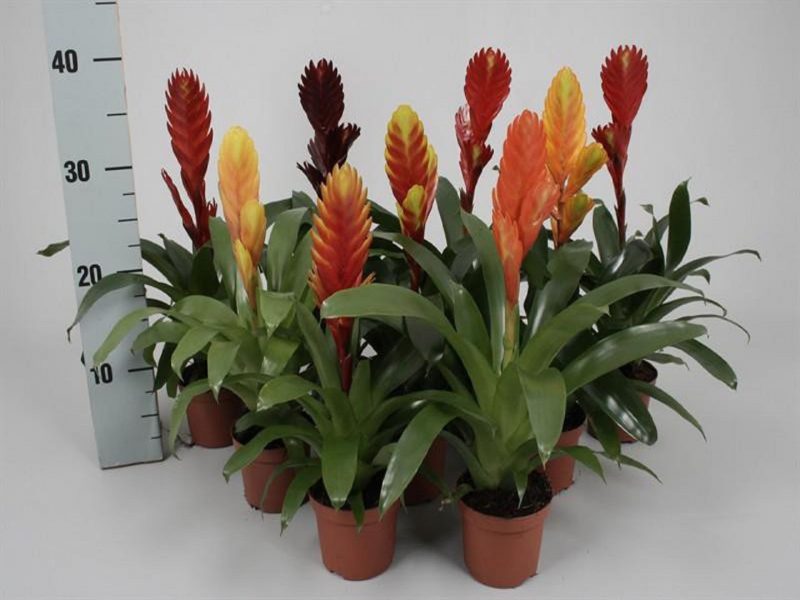
An exotic plant developing under the crowns of tropical vegetation needs diffused light, which it can receive in sufficient quantities, being near the eastern or western windows.
Ground and pot requirements

For growing vreezia, either a purchased substrate for bromeliads or a soil mixture of leafy soil, sand, crushed fern root, moss and pine bark in a ratio of 3: 1: 1: 1: 1 is used. Due to the poorly developed root system, the pot is selected wide and low - in the form of a bowl.
Temperature
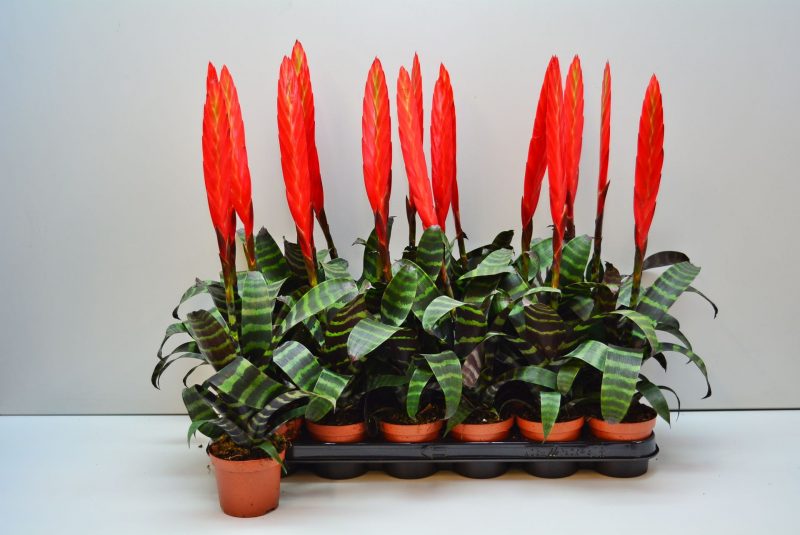
In summer, the culture is acceptable temperature range of 25-30 ° C. With the advent of cold weather, a temperature drop of 7 ° is permissible.
Caution! Soil should not be allowed to cool below 18 ° C, which can trigger the development of rot.
Top dressing
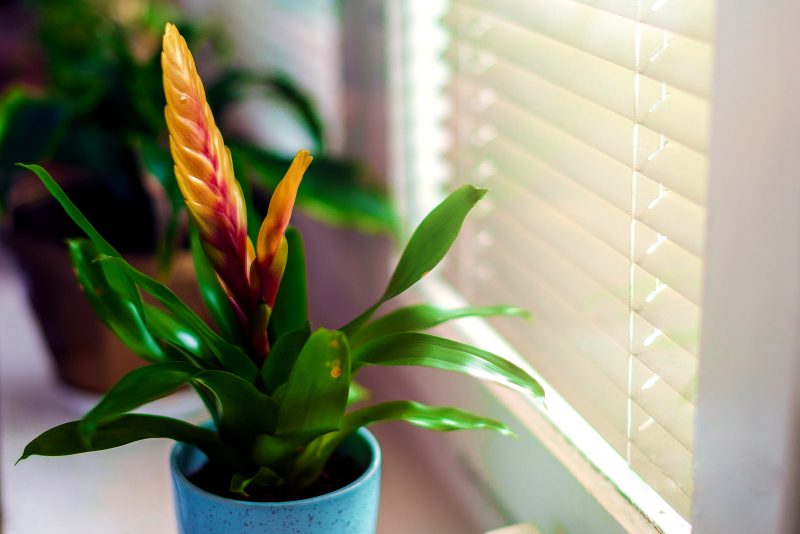
During the period of intensive growth, the plant is fed by the foliar method with special liquid or complex fertilizers for flowering plants. When preparing top dressings, the concentration should be half as much as indicated on the package.
Watering

The most important and specific event in which watering is carried out through a power outlet. During the period of active vegetation and flowering, the substrate is moistened regularly to prevent the drying of an earthen coma. Settled water at room temperature is poured into the outlet funnel, but should not stagnate there. By lowering the temperature in the room where the plant is kept to 20 ° C, excess water from the outlet is necessarily removed, and the frequency of watering is reduced.
Air humidity

A fairly high level of humidity, reminiscent of tropical, is achieved by spraying vriesia twice a day. In the absence of free time, you can place the pot in a pan with wet pebbles or moss.
Transfer
The procedure is carried out in the spring-summer period:
- for specimens until they reach the age of three annually.
- for older plants, it is recommended to maintain an interval of 3-4 years, which avoids injury to the fragile root system.
When transplanting, the following scheme should be followed:
- A drainage layer is placed in the selected pot at the bottom.
- A little substrate is falling asleep on top.
- By transshipment, the plant moves.
- All voids are covered with a substrate, which is then compacted.
Protection against diseases and pests
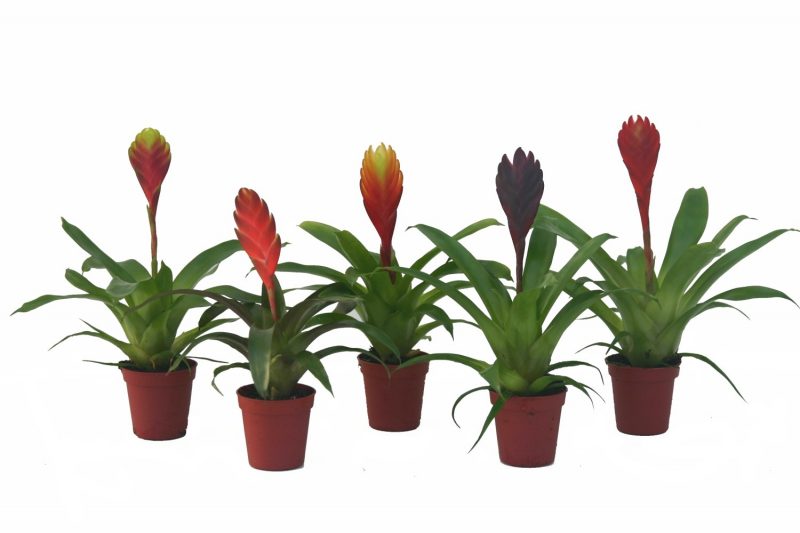
Due to a violation of the care regulations, the culture may be affected by fungal diseases in the form of rot, which, with a high degree of development, cannot be treated. Among harmful insects, vriesia can be attacked by a scale insect, mealybug and red mite. As a protective measure, an insecticide treatment is carried out, in which the soil must be protected with a film in order to avoid the entry of a chemical into it.
Propagation of a houseplant
Despite the ability to propagate vriesia with both seeds and children, the latter method is the most popular and effective.
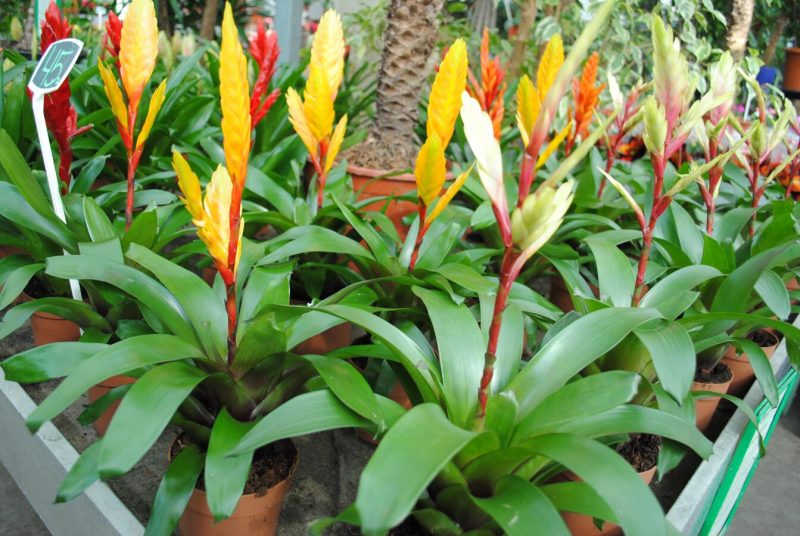
When reproducing:
- Siblings with a length of ⅓ from the height of the maternal specimen are selected and separated by a sterile instrument.
- Children planted in a substrate and covered with a glass cap.
- After a month, when the rooting occurs, the protection is removed so that the new plant adapts to the usual environment.
Need for transplant after purchase

When a flower appears in the house, it is necessary to give it time to adapt to new conditions. After 14-18 days, it is recommended to transplant vriesia from the transport container into a more convenient dish with a special substrate, which is suitable for cultivation of representatives of bromeliads.
Difficulties in growing: what to do if vriesia does not bloom?
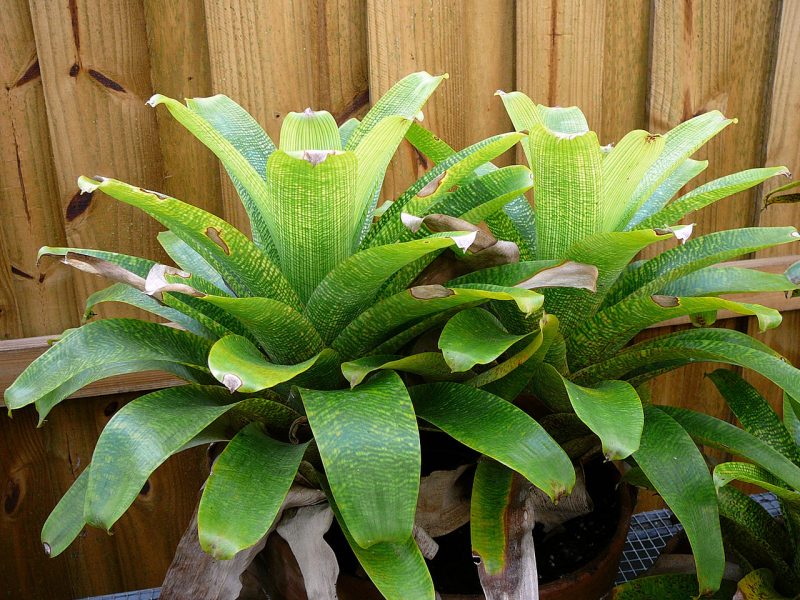
Growing a flower is sometimes accompanied by such problems:
- The decay of inflorescences and peduncle - occurs due to a strong drop in temperature or stagnation of water in the outlet.
- Drying leaf tips - Excessive dryness of the air is the cause of the problem.
- Brownish spotting on the leaves - the plant gets burns in the open sun.
- Yellowing of leaves and drying - a problem situation is associated with the population of culture with scale insects.
- Lack of flowers - apart from being too young, the cause may be ethylene deficiency, which stimulates flowering. To obtain a flowering culture, a banana or an apple is placed next to the pot, after which everything is covered with a plastic bag so that the necessary gas does not evaporate.
So, a beautiful flower that can decorate a room for any purpose and bring sunshine to the interior is loved by many gardeners for its simplicity of maintenance, subject to the basic agricultural recommendations.












